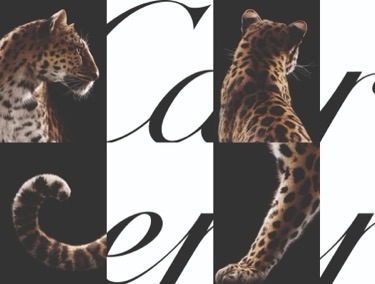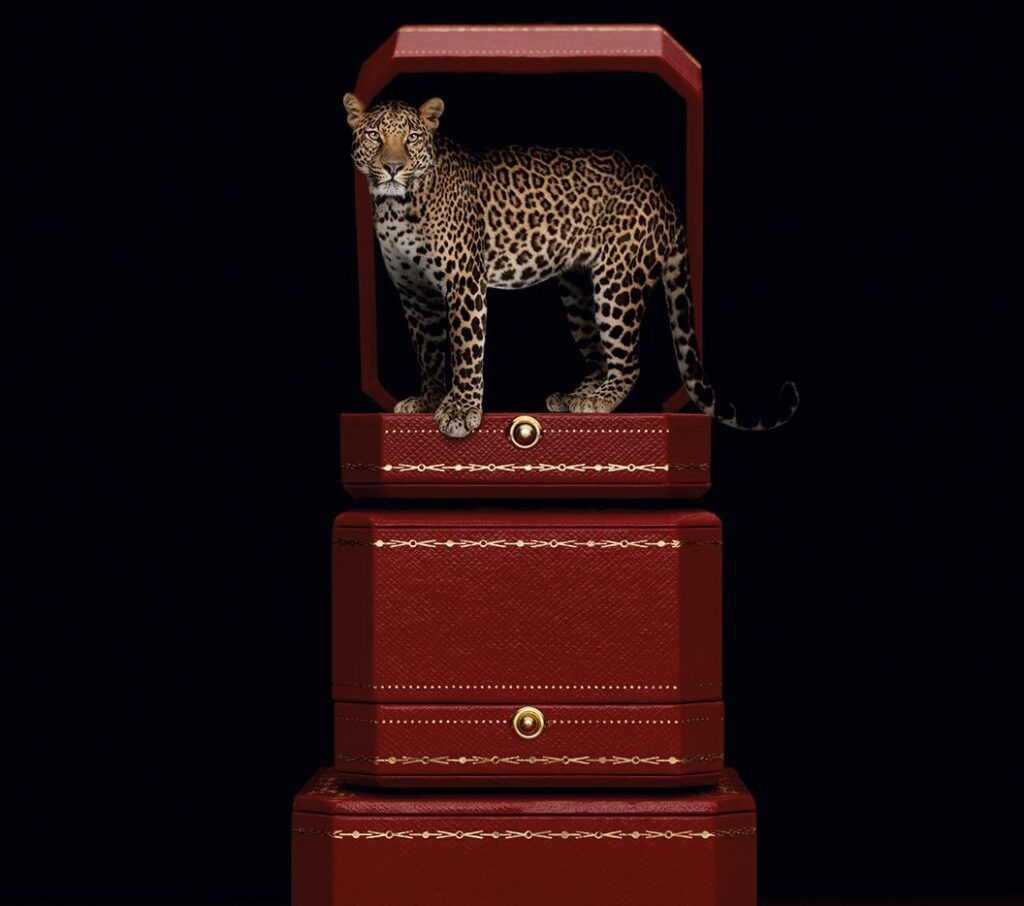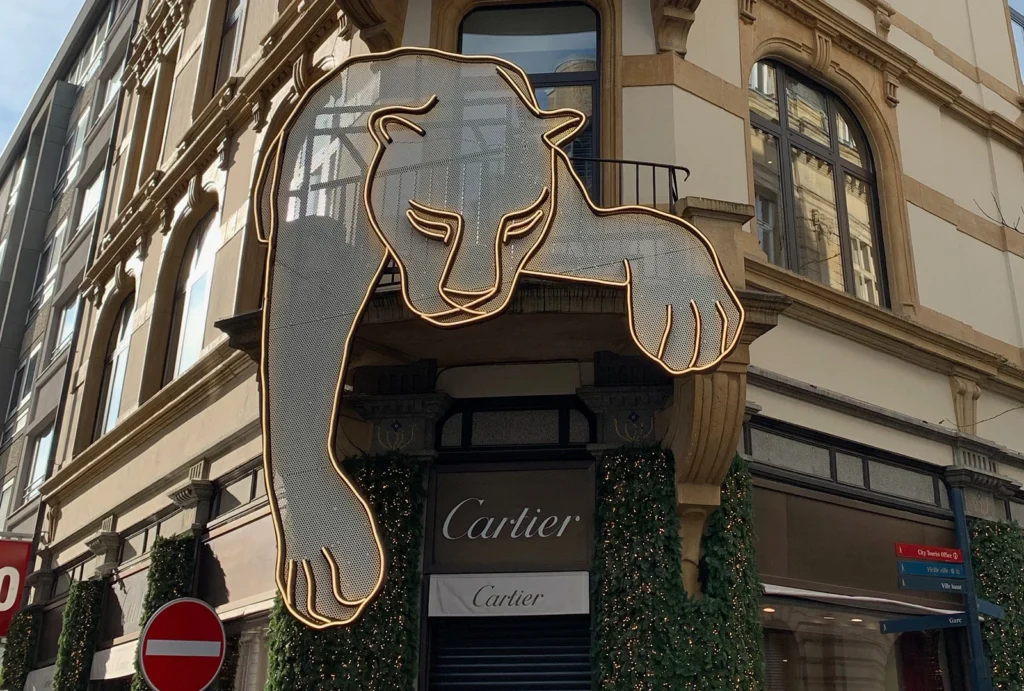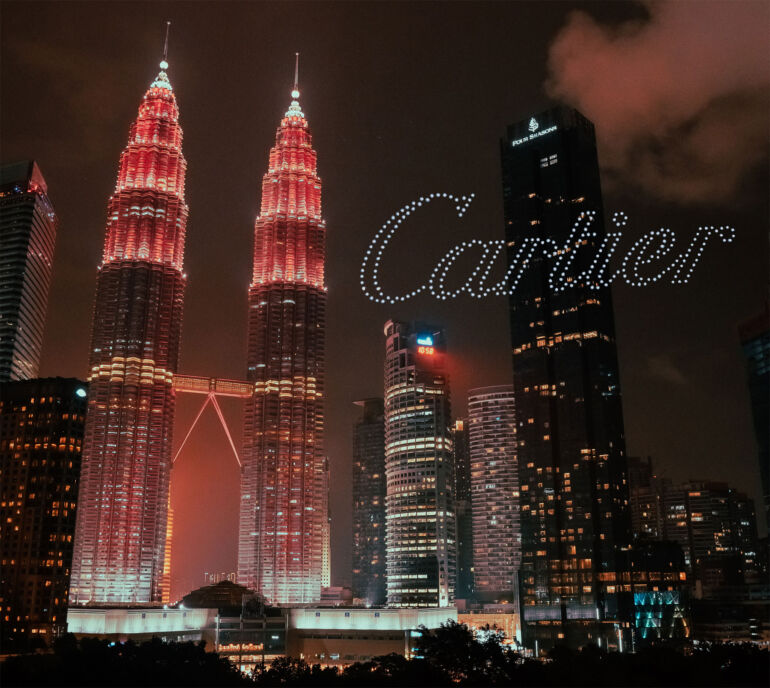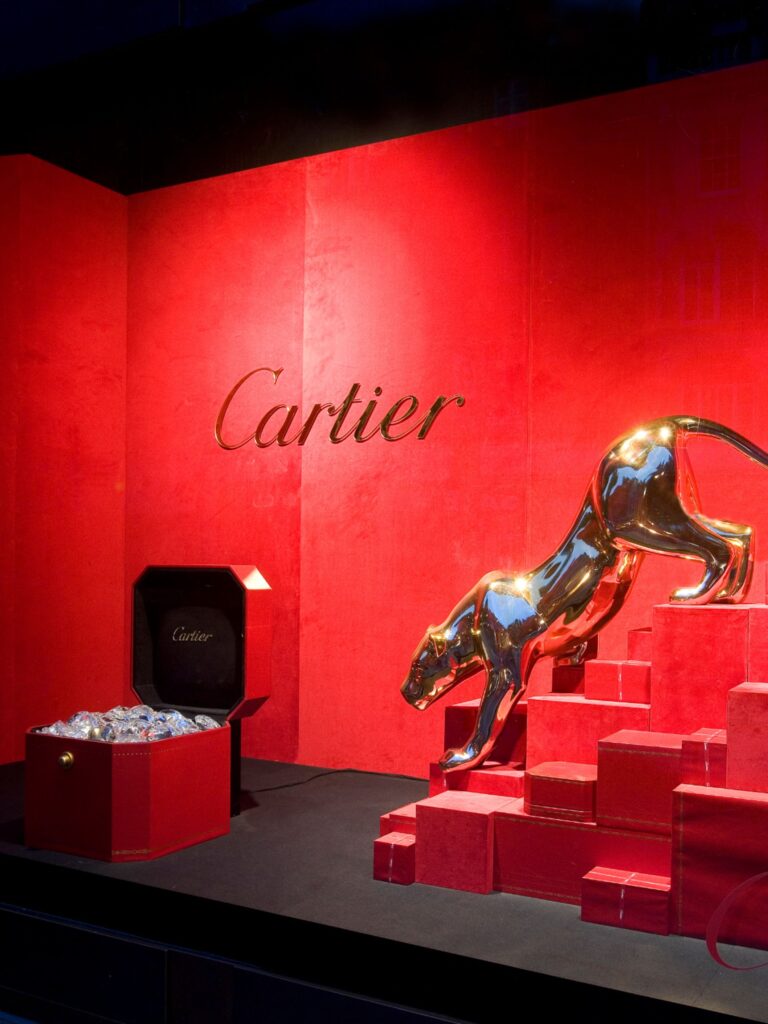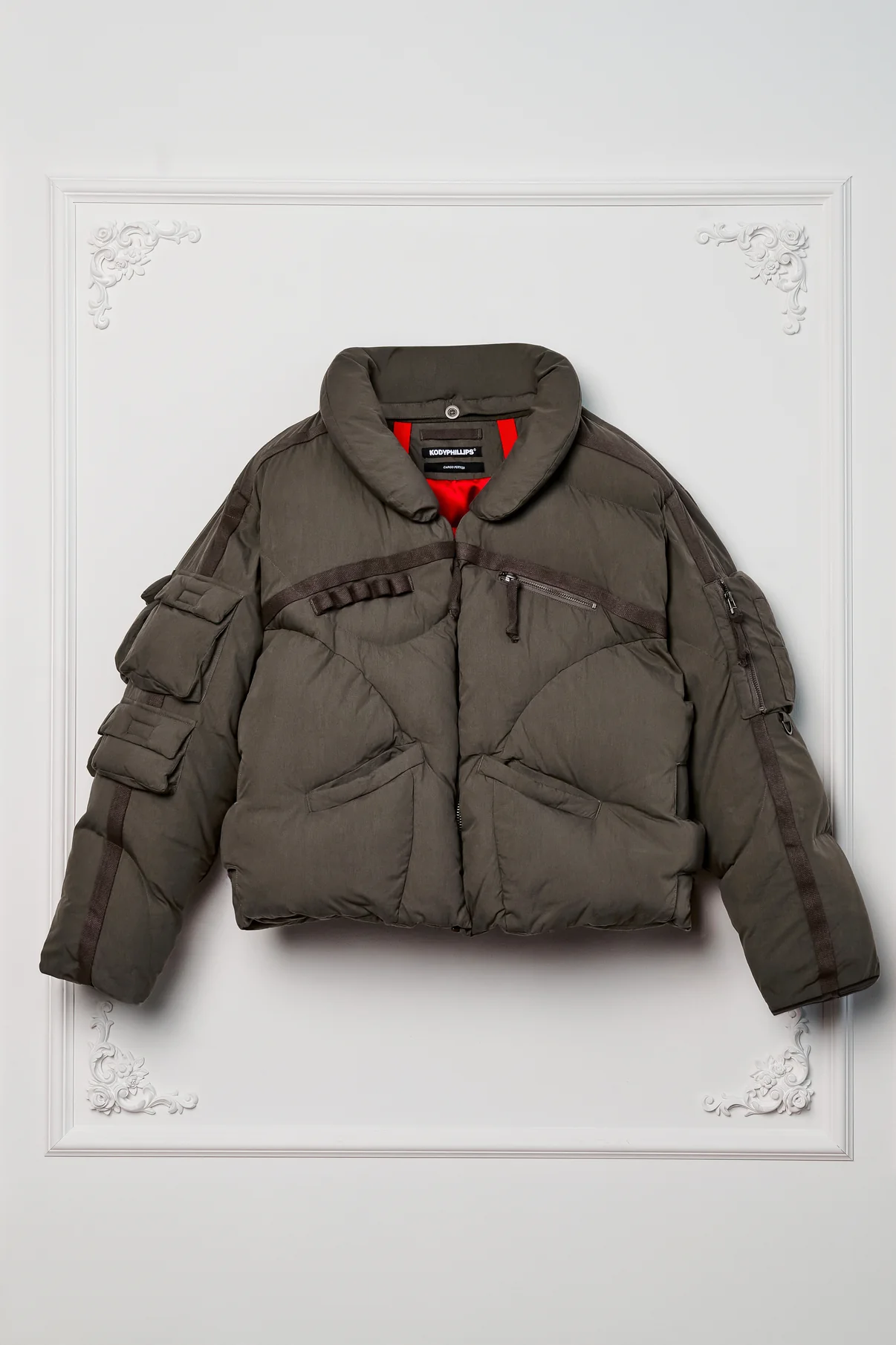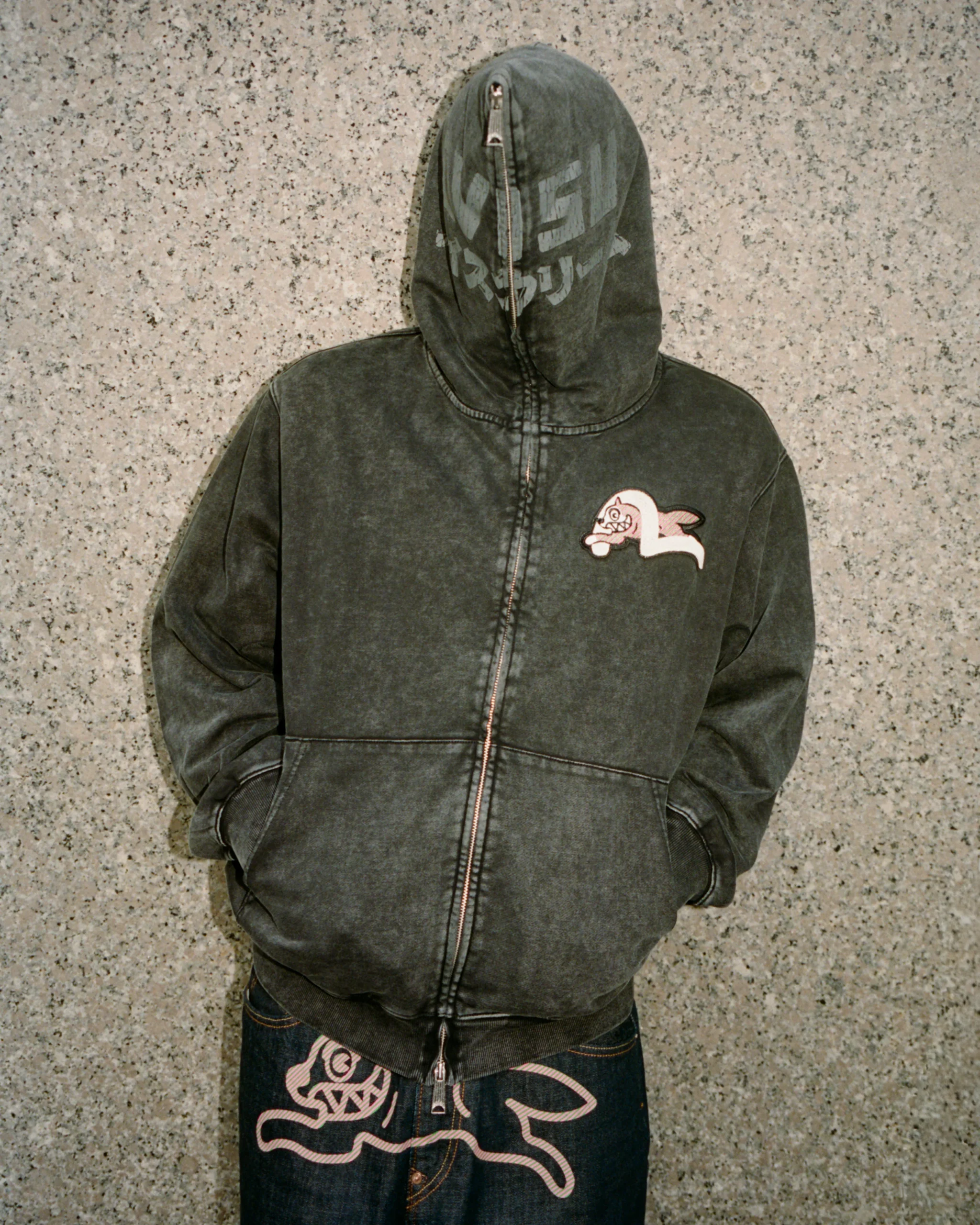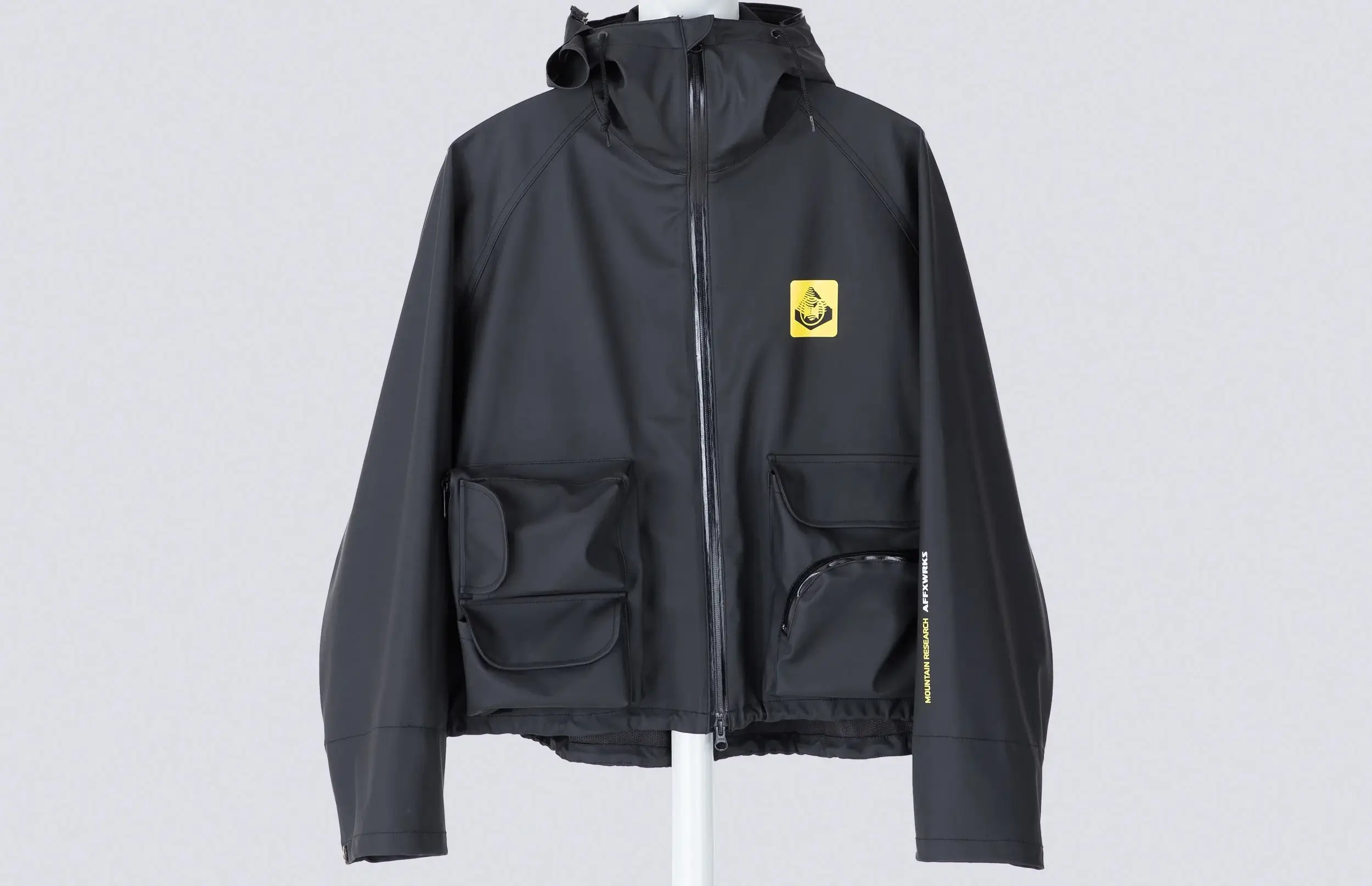Few symbols in luxury jewelry carry as much power as Cartier’s Panther. Sleek, elusive, and magnetic, the Panther has been at the heart of Cartier’s creative identity for over a century. Now, in what the Maison calls its most ambitious campaign to date, Cartier has brought the Panther out of the boutique and into the public sphere—literally. Launched on September 1 with activations in Las Vegas and Tokyo, the campaign transforms global landmarks into canvases for Cartier’s emblem. The message is unmistakable: the Panther is not just Cartier’s signature motif—it is its global calling card.
A Campaign Beyond Jewelry
The luxury market has long relied on exclusivity, but Cartier’s new strategy flips the paradigm by embracing public, immersive activations. The campaign places the Panther across some of the world’s busiest urban landscapes, a striking contrast to the hushed intimacy of high jewelry salons.
-
In Las Vegas, the Sphere—a colossal 366-foot dome—featured a three-dimensional Panther leaping across its surface, making it impossible to miss in the entertainment capital.
-
At Tokyo’s Shibuya Crossing, one of the world’s most frenetic pedestrian hubs, a monumental triptych of the Panther lit up the skyline, aligning Cartier’s mystique with Tokyo’s energy.
-
In Paris, the Place Saint-Michel fountain was reimagined as a stage, where a digital Panther rose dramatically from the water, paired with a QR code that unlocked a three-dimensional augmented reality experience.
Other activations included London’s Piccadilly, the Pont-Neuf, and Shanghai’s Exhibition Centre, ensuring Cartier’s emblem prowled across continents simultaneously.
This was not just a campaign—it was a spectacle of scale and artistry designed to redefine how luxury brands communicate in a crowded digital age.
The Panther as Cartier’s Signature
The Panther has a storied history in Cartier’s archives. Introduced in 1914 on a women’s wristwatch adorned with onyx and diamonds, the motif grew into an emblem of sensuality and power. In the decades that followed, Cartier’s “La Panthère” became synonymous with elegance and boldness, worn by iconic figures such as the Duchess of Windsor, Maria Felix, and later reinterpreted in contemporary collections.
The current campaign leans into that heritage by merging the Panther with Cartier’s initials. In several projections, the Panther pads across the screen, aligning itself with the letter “C,” reinforcing a direct, visual link between animal and Maison. A glance, a paw step, or a poised leap—each action becomes a metaphor for Cartier’s timeless presence.
In doing so, Cartier elevates the Panther beyond ornament into a living symbol: strength, freedom, and magnetism, crystallized in the global imagination.
From Private Salons to Public Squares
What makes this campaign significant is Cartier’s decision to move its most treasured emblem out of elite spaces and into the public domain. For over a century, the Maison cultivated an aura of exclusivity—high jewelry appointments behind closed doors, VIP launches, limited exhibitions. But in 2025, Cartier is embracing a more democratic model of storytelling.
The Panther’s projection across landmarks allows passersby—whether tourists, students, or locals—to encounter Cartier’s world without stepping into a boutique. This blend of accessibility and exclusivity marks a shift in luxury branding, where emotional connection and cultural symbolism carry as much weight as product scarcity.
Immersion and Digital Integration
Central to the campaign is its immersive design. The activations are not static billboards but multi-sensory encounters. Augmented reality, enabled through QR codes, allows onlookers to extend the Panther experience onto their phones, placing the animal into personal environments. This strategy acknowledges the way modern audiences consume luxury: not only as physical products but as digital narratives shared across social platforms.
By bringing the Panther into the realms of AR and large-scale projections, Cartier ensures that the campaign exists both in physical space and in the digital ecosystem, multiplying its reach. Every photo snapped at Shibuya Crossing or every Instagram video of the Panther prowling across Las Vegas becomes part of Cartier’s storytelling machine.
Why the Panther Still Resonates
Symbols endure because they adapt. For Cartier, the Panther has transformed from decorative motif to global ambassador. Its endurance lies in its ambiguity: simultaneously fierce and graceful, mysterious and magnetic.
The Panther also represents continuity. In an era where luxury brands often chase novelty, Cartier anchors its campaigns in a heritage symbol recognizable across generations. Each iteration of the Panther ties the present back to Cartier’s storied past while signaling a vision for the future.
Culture
Cartier’s choice of locations was not incidental. Each city offers cultural cachet that amplifies the campaign’s message:
-
Las Vegas: A city of spectacle, aligning Cartier with scale, entertainment, and visibility.
-
Tokyo’s Shibuya: A crossroads of technology and urban dynamism, symbolizing modernity and constant motion.
-
Paris: Cartier’s birthplace, grounding the campaign in heritage while using iconic architecture as canvas.
-
London & Shanghai: Global capitals of commerce and culture, ensuring Cartier speaks to East and West simultaneously.
By staging the Panther in these hubs, Cartier transforms local landmarks into universal stages, reinforcing the Maison’s status as a global player.
A Shift in Haute Marketing
Luxury marketing has traditionally revolved around exclusivity, privacy, and scarcity. But as digital culture reshapes consumption, even the most storied Maisons must adapt. Cartier’s campaign signals a pivot toward experiential storytelling.
Rather than asking clients to come to Cartier, the brand brings Cartier to the world. In doing so, it redefines exclusivity: not in terms of access, but in terms of scale, artistry, and emotion. Everyone can see the Panther, but Cartier remains the only house capable of commanding it.
This approach also counters the oversaturation of influencer-driven campaigns, offering something monumental and undeniable. Where a social media campaign can be scrolled past, a three-story Panther rising from a Parisian fountain is impossible to ignore.
The Panther in the Age of Social Media
While Cartier has a long history rooted in heritage, this campaign thrives in the age of virality. The Sphere in Las Vegas is already a social media magnet; combining it with Cartier’s Panther guarantees global visibility. Each activation becomes an Instagram moment, shared and reshared across digital platforms, amplifying the Panther’s mystique.
The Panther’s integration into city life also resonates with Gen Z and millennial audiences who value experience over possession. While not everyone will own a Cartier bracelet, everyone can encounter the Panther in the city, photograph it, and share in the story. This inclusivity builds long-term aspiration—a vital strategy for luxury brands seeking to secure future clientele.
The Art of Monumentality
Cartier’s campaign also demonstrates the power of monumentality. In an era where attention spans are shrinking, the brand embraces spectacle. The Panther is not a small motif on a necklace—it is a story 200 feet tall, a beast leaping across digital architecture.
This monumental approach aligns Cartier with art as much as commerce. The Panther becomes not just a brand symbol, but a public installation, merging advertising with culture. By blurring these boundaries, Cartier positions itself not merely as a jeweler but as a cultural institution.
A Global Emblem Reborn
Cartier’s Panther campaign is more than marketing—it is a cultural statement. By projecting the Panther across global landmarks, the Maison reinforces its identity while expanding its reach. The campaign redefines luxury storytelling in the 21st century: immersive, monumental, accessible yet aspirational.
The Panther is no longer confined to the wrist, the neck, or the boutique window. It prowls across cities, inhabits digital landscapes, and seizes public imagination. For Cartier, this is not just a campaign—it is a declaration that its emblem is as timeless and untamable as ever.
As the Panther leaps across continents, one truth becomes clear: Cartier is not just selling jewelry. It is selling mythology, scale, and vision. The Panther is both the messenger and the message, embodying strength, freedom, and magnetism on a global stage.
And in 2025, that stage has never been bigger.
No comments yet.

